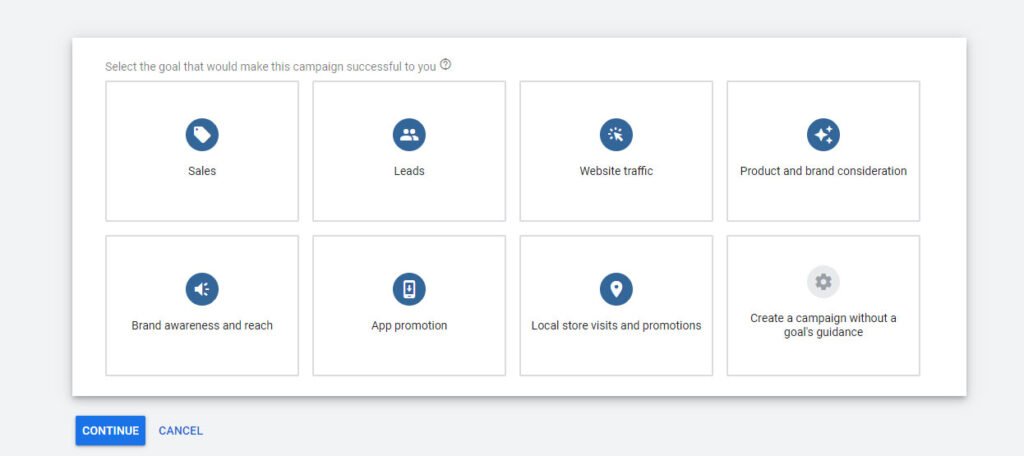How to use responsive search ads explained
The new ad format known as Responsive Search Ads (RSA for short) has been available at Google Ads for almost three years (May 2018). The RSAs are the next big step in the automation of Google Ads campaigns.
Should I use RSA? Is there any weakness or disadvantage compared to classic displays, and will this benefit me and my business?
Find out here as we share all information as regards Responsive Search Ads.
What are Responsive Search Ads?
Unlike classic text ads with three headlines (30 characters) and two text/descriptions (90 characters), Responsive Search Ads can use up to 15 headlines and four descriptions. Then Google will automatically test different combinations. It determines which combination of headline and description achieves the best performance – at least that’s what the official Google article says!
As with the “new” classic ads, the combination can only display up to 3 headlines with two descriptions at the same time:
How do Responsive Search Ads (RSA) work?
Classic text ads on Google Ads consist of a maximum of 3 headlines and two descriptions/lines of text in addition to the final URL and the 1st & 2nd URL path:
The headlines and lines of text are always displayed in the specified order. The same applies to the two advertising texts. The 3rd headline and the 2nd line of text (marked with “NEW”) are not always necessarily broadcast. These elements are also to be understood as “responsive” for classic text ads.
For example, three long headlines will rarely or never show on mobile devices due to the length and space. Of course, you should always use the whole space; this way, ads appear much larger overall. The prominent appearance of an ad has a positive effect on the click-through rate, as the ad attracts more attention.
The alternative to classic text ads: Responsive Search Ads

Responsive Search Ads (RSA) are now the default ad type in Google Ads, as announced this February 2021. Compared to Classic Text Ads, Responsive Ads are bigger and better; they have more impact and broader reach.
Responsive Search Ads are composed of a maximum of 15 headlines and four lines of text. The various combinations are automatically generated by Google and tested against each other.
The headlines and texts can be fixed (pinned) at specific points so that, for example, ads always begin with a relevant keyword or end with a call-to-action (CTA). You can recognize this by the pin needle and the small number next to the corresponding field.
The function is somewhat hidden and only appears when you move the mouse over the title or description. You then receive the “recommendation” that the headlines or descriptions should be used in any position and not in a fixed position. Of course, you shouldn’t let Google decide for you! If you want a title in the first place, then ignore the recommendation and click on “Only use this headline in position 1”.
While creating/editing your responsive search network ad, it is rated in real-time by Google (ad effectiveness). In particular, Google evaluates the number of headlines and descriptions, how individually the headlines are designed, and how well they fit your keywords. How exactly this works is not disclosed.
Whether your ads are better when you get a “Very Good” from Google is questionable. In any case, you should use at least five headlines and three descriptions; otherwise, you could use classic text ads. There is nothing wrong with using 15 titles and four descriptions if you use relevant and individual content! Under no circumstances should you blindly rely on the assessment.
Advantages and disadvantages of responsive search ads
Benefits of Responsive Search Ads:
- You can create ads quickly and flexibly, adapted in real-time to the corresponding device and the search query. In theory, you save time if you specify different headlines and descriptions and let Google optimize (of course, you also give up some control!).
- Responsive search ads should – according to Google – have a positive effect on the click and conversion rate.
Disadvantages of Responsive Search Ads:
There are not many disadvantages with this platform except a lack of transparency in Responsive Search Ads (RSA). Pay Per Click (PPC) advertising and you can currently click on “Call up asset details” under the ad to see which combinations have been delivered most frequently. BUT you don’t know how the individual combinations are performing right now.
Click rates, conversions, session duration, bounce rates, etc., can only be evaluated for the entire RSA. It remains to be seen whether all combinations can be evaluated on their own after the beta.
When optimizing Google Ads campaigns, we rely on classic A / B tests, in which we test two ads evenly distributed (50/50 – indefinite ad rotation) against each other. It is the only way to really compare advertisements with one another and successively optimize the content.
As with the “Optimized Ad Rotation,” a large part of the control is also given to Google with the “Responsive Search Ads.” You will undoubtedly save time, but there is no guarantee that the RSA will deliver better results than classic text ads. You should instead optimize your campaigns/ads independently if you have the time!
RSA Quick Facts
- Google automatically optimizes responsive Search Ads over time. You should regularly check the performance yourself and compare it with your classic ads.
- You can also have 1-2 classic text ads and one responsive ad per ad group.
- The best way to compare ads is to run two ads evenly (50/50) and at the same time with “indefinite ad rotation.” Then you can see which format works better for you.
- RSA is currently only available in German, English, French, and Spanish.
- Since headlines and descriptions (assets) appear in any order, they must make sense independently and in combination with other assets.
- Of course, the advertising guidelines also apply to RSA.
- If you want to fix a title first, you have to “pin” it. The function only appears when you move the mouse over the relevant point.
Conclusion
Now that you have learned the fundamentals of Responsive Search Ads, Ilmibook believes this will better inform your decisions when running future campaigns either for your business or elsewhere.
In this blog, we have looked at what Responsive Search Ads are, how they work, how they differ from classic text ads, and the advantages and disadvantages these ads offer.
Indeed, the responsive search ads may have disadvantages, but it is not as significant as RSA’s benefits. Now you get more done with better results in lesser time. The benefits you stand to gain by using Responsive Search Ads are endless. Maximize them so you can see your results not just met but also exceeded.





